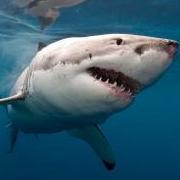-
Topics
-
Latest Update
-
0
Selling corals Zoas
Selling corals Zoas Length 6cm growing as well.$22 Collect at woodlands Contact 96565557. Thanks -
1
Coral Decom Sale
Not sure why some of the images aren’t showing for some but have posted them below: Toxic Green Branching Hammer $25 Giant Brownish Green Frogspawn $60 Green Frogspawn $40 Zoa Assortment A,B,C,E,F,G - $30 each D,I - $20 each Green Toadstool $20 Lumi Green Polyp Encrusting Toadstool $20 Bundle Deal: Buy 2, $5 off Buy 3, $10 off Buy 4 or more, 10% off -
0
WTS: Yellow oxide Zoa
$15 collect from Yishun st 81 Hp: 9298 7789 Sent from my SM-A546E using Tapatalk -
0
Codium macroalgae tennis ball size clump
Hello Wts sgd 3 Punggol place 821209 -
1
Coral Decom Sale
Hi fellow reefers! Planning to do a quick decom as I have neglected my tank for too long and I want to pass on my livestock and corals to others who can probably provide better care for them. This is phase 1 where I will be selling off corals first. Phase 2 will be livestock and Phase 3 will be equipment. Blue Tip Green Torch (2-3 heads) $30 Yellow-Green Dragon Soul Torch (>8 heads) $180 Hellfire Torch (3-4 heads) + 2 free tiny Rhodacitis on stone plug $70 Large Branching Lumi Green Hammer (> 8 heads) $120 Reverse Branching Hammer with Green Stem and Purple Tip $50 Green Branching Hammer with Brown Stem $35 Jade Green Branching Hammer $35 Slightly Lumi Green Branching Hammer with Green Stem $35 Purplish Single Head Branching Hammer $15 Toxic Green Branching Hammer $25 Giant Brownish Green Frogspawn $60 Green Frogspawn $40 Zoa Assortment A,B,C,E,F,G - $30 each D,I - $20 each Toadstool $20 Lumi Green Polyp Encrusting Toadstool $20 Bundle Deal: Buy 2, $5 off Buy 3, $10 off Buy 4 or more, 10% off Do PM me if interested! Collection at my void deck at 753589 (Sembawang) only. Thanks for browsing! (:
-








Recommended Posts
Join the conversation
You can post now and register later. If you have an account, sign in now to post with your account.